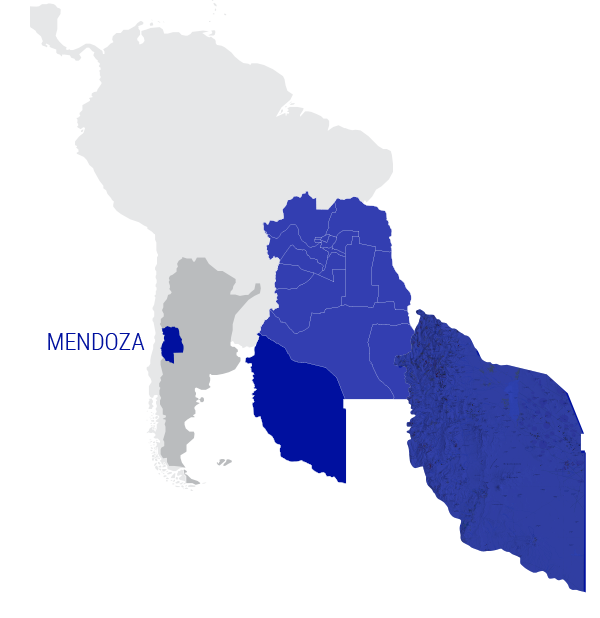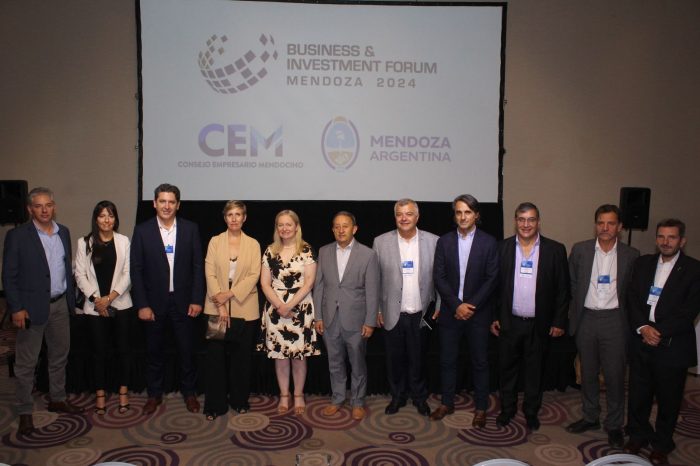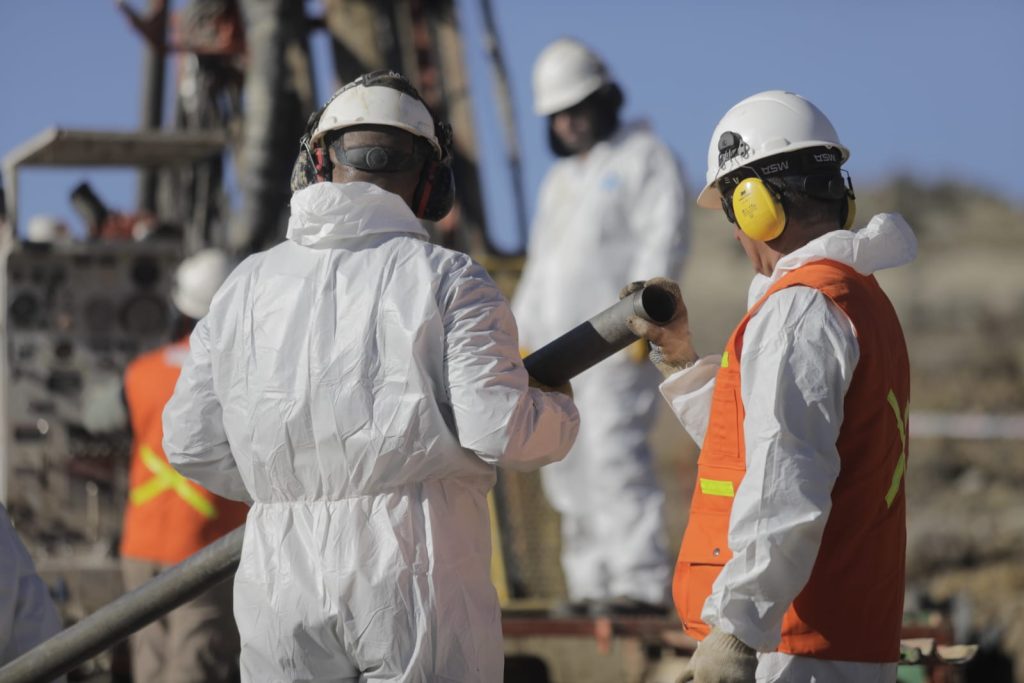
COMPANY
WHAT IS
IMPULSA MENDOZA
Impulsa Mendoza is the tool created by the Government of Mendoza for the development of mining as a State policy.

LOCATION
MENDOZA,
LAND OF OPORTUNITIES
Located in central-western Argentina, at the foot of the Andes mountain range, Mendoza is the most important province in the Cuyo region.

INVESTMENTS
PROJECTS FOR THE DEVELOPMENT OF MENDOZA
Mendoza recovered the potassium deposit that had been inactive since 2013 and took full possession in 2020, after arduous negotiations.
WHO ARE WE AND WHAT DO WE DO?
Impulsa Mendoza is the vehicle adopted by the province of Mendoza to develop a modern and sustainable mining sector.
Our goal is to encourage and attract private investment to the mining sector, always looking for projects with public and private participation. To this end, we have developed investment projects and communication campaigns, as well as we have created strategic planning that involves environmental studies.
Mission:
- Transforming mineral resources into Sustainable Growth.
Vision:
- To become the vehicle that pushes forward the development of Mendoza through modern sustainable mining.
Values:
- Respect for the legal framework needed by society and the environment.
- ESG Objectives.
- Sustainable Development Goals.
Objectives:
- Add value and attract private investors to mining projects with enormous geological potential that are framed within the current law, and in regions where it is environmentally and socially possible to carry out the activity.
- Develop means to boost the opportunities that the province provides to the mining sector.
- Encourage the economic and social growth within the current legal framework.
- Generate added value in the entire productive chain.
- Adopt and promote the highest standards in the minerals sector.

MENDOZA, LAND OF OPORTUNITIES
Located in the central-western zone of Argentina, at the foot of the Andes mountain range, Mendoza is the most important province in the Cuyo region. In addition to being the bi-oceanic corridor that connects the Atlantic with the Pacific, it is one of the most thriving economies in the country, with sectors as diverse as agriculture, industry, agribusiness and technology; and with a long tradition in hydrocarbons and hydroelectric energy.
The province borders Chile and is in an area with enormous geological potential in minerals that are critical for energy transition, such as copper, gold, silver, zinc, manganese, uranium and iron. Mendoza has the largest potassium deposit in Latin America.
Today, the province counts with a specific legal framework that limits the use of certain technologies and requires legislative ratification of Environmental Impact studies. To comply with this legal framework and take the path of development again, Impulsa investigates and promotes the processes for the growth of the mining sector, considering current regulations and with all the required studies.
During 2016, the Ministry of Economy and Energy carried out an initiative called Mining Dialogue Space for Sustainable Development, a conference aimed at analyzing, understanding and defining the bases of a State Policy for Mining in Mendoza.

In this space, more than 70 exhibitions were held with more than 1500 participants, including representatives of the executive and the legislative branches of the Government, the Irrigation General Department, Universities, Technical Institutes, NGOs, business chambers and professional associations; freelancers; students and general public. Based on these conferences, a map was drawn in which the different subsectors that shape the mining universe were analyzed, considering types of mining, stages of development, magnitude of the projects and their location.
From the beginning of these works until today, great progress has been made that permitted the recovery of Potasio Río Colorado, a potassium mine located in Malargüe, capable of supplying the local market and exporting. The recovery of this mine also made possible the birth of Impulsa Mendoza.
Currently, the province of Mendoza participates in forums, conferences and exhibitions where relevant information is shared to introduce and position the province as an attractive destination for mining investment.
ONGOING: PROJECTS IN DEVELOPMENT

POTASIO RIO COLORADO
Mendoza recovered the field that Vale had left inactive in 2013 and took full possession in 2020.

HIERRO INDIO
The iron exploration in Malargüe
was the second project developed by
Impulsa S.A.

EL SEGURO
Copper is one of the minerals with the greatest demand and greatest future projection in the world.
MDMO
The Malargüe Occidental Mining District is a tool developed by the Government of the Province of Mendoza.
PLAN PILARES
The Plan Pilares is based on studies on economic, social, institutional, technical and environmental capacities.
WHY WE PROMOTE MINING: ADVANTAGES FOR THE SOCIETY
Impulsa Mendoza is a vehicle to promote the development of Mendoza, focused on an activity that results in essential resources for the subsistence of communities, such as potassium or copper.
In addition to being key to the transition to clean energy, mining is an engine for the local economy: mining development brings with it the growth of royalties, trade and municipal taxes, and encourages the growth of regional infrastructure.
The mining industry moves the wheel of production in sectors as diverse as manufacturing, construction, commerce, professional and business services, transportation, logistics, hotels, restaurants and energy, such as gas and hydrocarbons. In addition, it has high levels of labor formality, provides above-average salaries and promotes the technification and professionalization of local suppliers.
In terms of environment, this activity uses water resources that are recirculated in closed circuits, in which it is only necessary to replace what evaporates, so consumption is low compared to other productive activities.




